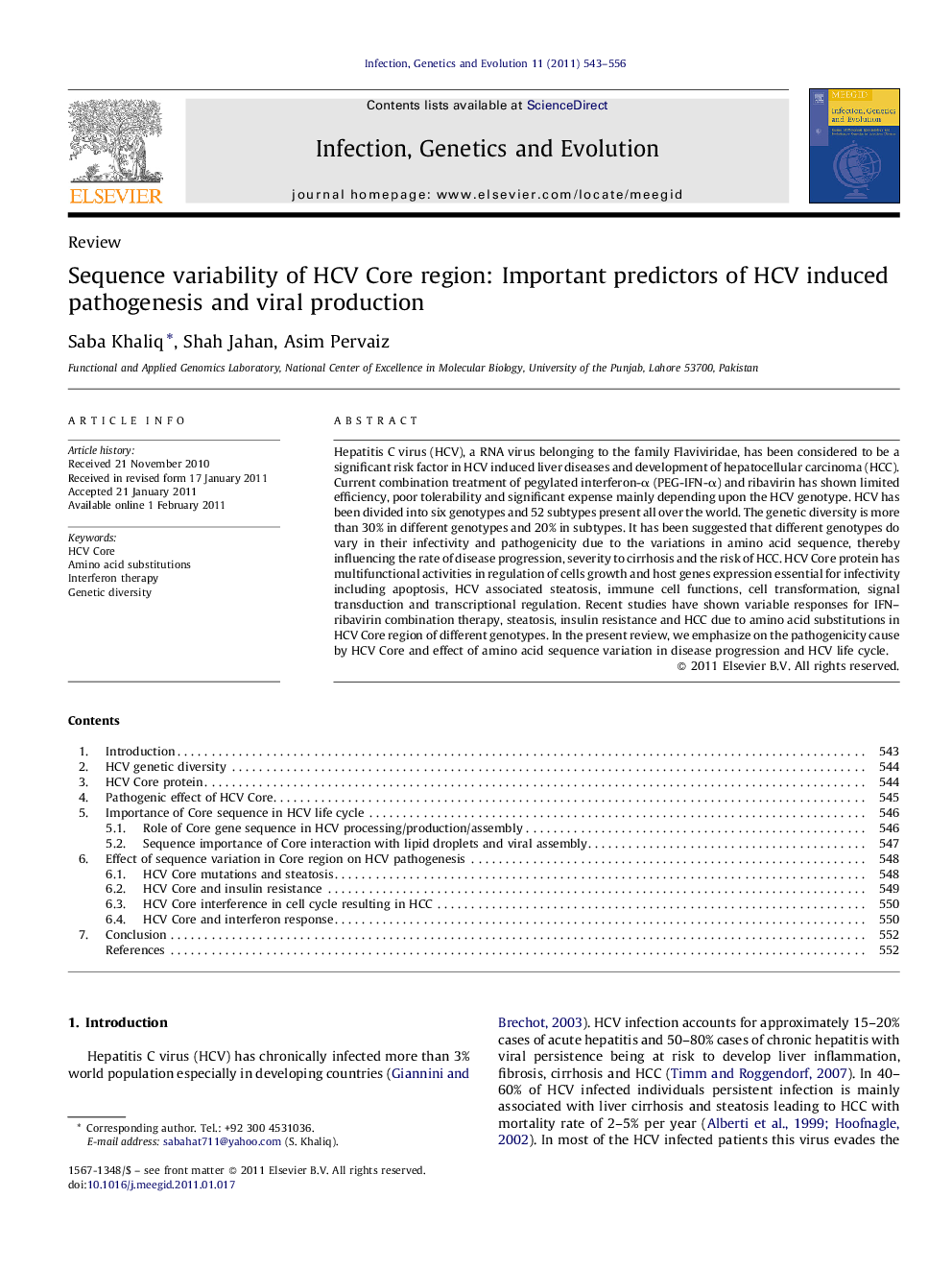| Article ID | Journal | Published Year | Pages | File Type |
|---|---|---|---|---|
| 5911695 | Infection, Genetics and Evolution | 2011 | 14 Pages |
Hepatitis C virus (HCV), a RNA virus belonging to the family Flaviviridae, has been considered to be a significant risk factor in HCV induced liver diseases and development of hepatocellular carcinoma (HCC). Current combination treatment of pegylated interferon-α (PEG-IFN-α) and ribavirin has shown limited efficiency, poor tolerability and significant expense mainly depending upon the HCV genotype. HCV has been divided into six genotypes and 52 subtypes present all over the world. The genetic diversity is more than 30% in different genotypes and 20% in subtypes. It has been suggested that different genotypes do vary in their infectivity and pathogenicity due to the variations in amino acid sequence, thereby influencing the rate of disease progression, severity to cirrhosis and the risk of HCC. HCV Core protein has multifunctional activities in regulation of cells growth and host genes expression essential for infectivity including apoptosis, HCV associated steatosis, immune cell functions, cell transformation, signal transduction and transcriptional regulation. Recent studies have shown variable responses for IFN-ribavirin combination therapy, steatosis, insulin resistance and HCC due to amino acid substitutions in HCV Core region of different genotypes. In the present review, we emphasize on the pathogenicity cause by HCV Core and effect of amino acid sequence variation in disease progression and HCV life cycle.
